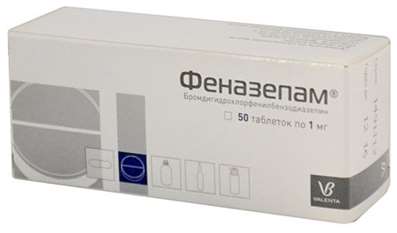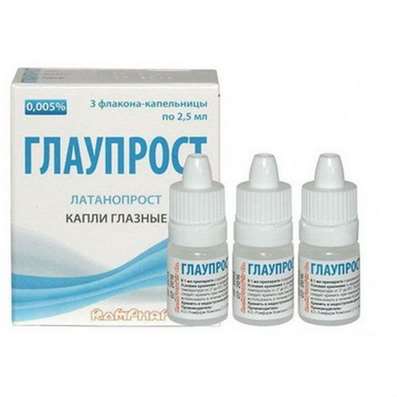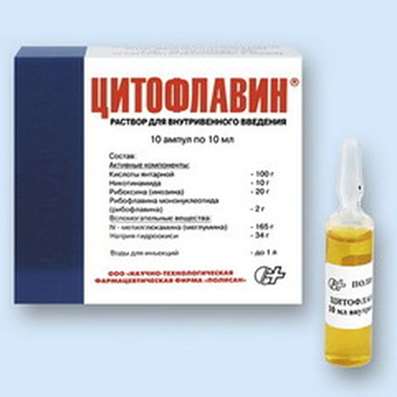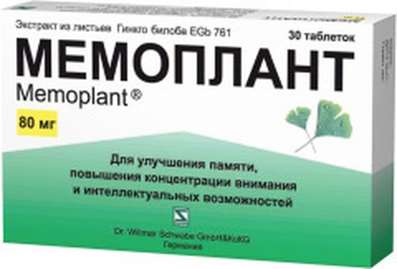Instruction for use: Lonquex
I want this, give me price
Dosage form: Solution for subcutaneous administration
Active substance: Lipegfilgrastimum
ATX
L03AA14 Lipagfilgrastim
Pharmacological group
Leukopoiesis stimulant [Stimulators of hemopoiesis]
The nosological classification (ICD-10)
C80 Malignant neoplasm without specification of localization: Malignant tumor; Malignant neoplasm; Malignant neoplasms of different localization; Malignant tumors; Eton-Lambert syndrome; Locally prevalent forms of malignant neoplasms; Metastatic ascites; Metastatic ascites; Cerebellar degeneration in tumors; Hereditary cancers; Metastatic tumors; Cancer ascites; Solid tumors
D72.8.0 * Leukopenia: Autoimmune neutropenia; Congenital neutropenia; Granulocytopenia; Idiopathic and drug-induced leukopenia; Idiopathic neutropenia; Leukopenia aplastic; Leukopenia radiation; Leukopenia with radiation therapy; Radiation leukopenia; Hereditary neutropenia; Neutropenia in patients with AIDS; Periodic neutropenia; Radiation leukopenia; Persistent neutropenia; Febrile neutropenia; Two-stage cytopenia; Radiation cytopenia; Neutropenia is cyclic
Z51.1 Chemotherapy for neoplasm: Cystitis hemorrhagic, caused by cytostatics; Urotoxicity of cytostatics
Composition
Solution for subcutaneous administration 1 syringe
active substance: Lipagfilgrastim (in terms of protein) 6 mg
Auxiliary substances: acetic acid ice - 0.36 mg; Polysorbate 20 - 0.02 mg; Sorbitol - 30 mg; Sodium hydroxide (1 M) - up to pH 5; Water for injection - up to 0.6 ml
Description of dosage form
Transparent colorless liquid.
Pharmachologic effect
Mode of action - Leukopoietic.
Pharmacodynamics
Lipegfilgrastim is a covalent filgrastim conjugate bound to one molecule of methoxypolyethylene glycol through a carbohydrate linker consisting of glycine, N-acetylneuraminic acid and N-acetylgalactosamine.
The human granulocyte colony-stimulating factor (G-CSF) is a glycoprotein that regulates the formation of functionally active neutrophils and their release into the peripheral blood from the bone marrow. Filgrastim is a non-glycosylated recombinant human G-CSF with an additional methionine residue. Lipagfilgrastim is a prolonged form of filgrastim due to reduced renal clearance. Lipegfilgrastim binds to the G-CSF receptor like filgrastim and lipegfilgrastim.
Lipegfilgrastim significantly increases the number of neutrophils in the peripheral blood in the first 24 hours after administration, causing a small increase in the number of monocytes and / or lymphocytes. Due to the presence of a part of G-CSF in the lipegfligrastim molecule, this growth factor has the expected activity: it stimulates the proliferation of hematopoietic progenitor cells, their differentiation into mature cells and the release into the peripheral blood. G-CSF is a specific factor not only for neutrophils, it also has the effect on other progenitor cells that give from one to several differentiation lines, and to polypotent hematopoietic stem cells. In addition, G-CSF increases the phagocytic and antibacterial activity of neutrophils, enhancing the cellular mechanisms of anti-infective immunity by priming neutrophils. According to clinical studies, it was found that the duration of severe neutropenia in the first cycle of chemotherapy in the treatment with lipegfilgrastim and pegfilgrastim is generally similar, the incidence of febrile neutropenia is significantly higher in the placebo group compared to the group of patients treated with lipegfilgrastim. The effective dose is 6 mg lipegfilgrastim.
Pharmacokinetics
In healthy volunteers, after a single injection of various doses of Cmax lipegfilgrastim in blood plasma is achieved on average 10-30 hours, with the final T1 / 2 averaging 32-49 hours.
Special patient groups
In patients with breast cancer who received chemotherapy with a combination of doxorubicin and docetaxel, after a single injection sc injection 3; 4,5 or 6 mg lipegfilgrastima in the first cycle of chemotherapy Cmax lipagfilgrastima in the blood was achieved on average 47 hours, with the final T1 / 2 averaged 23-32 hours. After a single injection SC 3; 4,5 or 6 mg lipegfilgrastim in the fourth cycle of chemotherapy Cmax lipegfilgrastim in blood plasma was achieved on average 11 hours, while the final T1 / 2 averaged 26-41 hours.
In patients with non-small cell lung cancer receiving chemotherapy with a combination of cisplatin and etoposide, the mean Cmax lipegfilgrastim in the blood, equal to 317 ng / mL, was achieved on average 24 hours, and the median final T1 / 2 was approximately 28 hours after a single SC injection 6 Mg lipagfilgrastima during the first cycle of chemotherapy. After a single injection of 6 mg lipagfilgrastim during the fourth cycle, the mean Cmax lipegfilgrastim in the blood, 149 ng / ml, was achieved on average 8 hours and the average T1 / 2 was approximately 34 hours.
The excretion of lipegfilgrastim decreases with an increase in its dose, which is probably due to a decrease in the clearance of lipegfilgrastim mediated by the influence of neutrophils. The clearance decreases with an increase in the dose of lipegfilgrastim. In accordance with the self-regulating mechanism of clearance, the concentration in the blood plasma of lipegfilgrastim slowly decreases during the transient reduction in the number of neutrophils associated with chemotherapy, and quickly - after the start of recovery of the number of neutrophils.
Patients with renal or hepatic insufficiency. Given the effect of neutrophils on clearance, it is clear that the pharmacokinetic indices of lipegfilgrastim do not change with renal or hepatic insufficiency.
Elderly patients. Limited data suggest that the pharmacokinetics of lipagglilgrastim in elderly patients (65-74 years) is similar to that characteristic of young patients. No pharmacokinetic data for lipagglilgrastim for patients over the age of 75 years.
Patients with excessive body weight. The tendency to reduce the effects of lipegfilgrastim was observed in patients with an increase in body weight. This can lead to a decrease in pharmacodynamic responses in patients with a large body weight (> 95 kg). Based on the available data, these patients cannot be excluded from the subsequent reduction in efficacy.
Indication of the drug Lonquex
Reduction of the duration of neutropenia and a decrease in the incidence of febrile neutropenia due to myelosuppressive cytotoxic chemotherapy for malignant diseases (with the exception of chronic myelogenous leukemia and myelodysplastic syndrome).
Contraindications
Hypersensitivity to lipegfilgrastim (including colony stimulating factors: filgrastimu, lipegfilgrastim, Escherichia coli) or other components of the drug;
Children's age till 18 years.
With caution: malignant and premalignant diseases of the myeloid nature (including acute myelogenous leukemia de novo and secondary); Sickle-cell anemia; Use in combination with high-dosage chemotherapy; Intolerance to fructose, insufficiency of sugarase / isomaltase, glucose-galactose malabsorption syndrome.
Application in pregnancy and breastfeeding
It is not recommended to use lipegfilgrastim during pregnancy. Pre-clinical studies have not revealed a toxic effect on reproductive function. Experience with pregnant women is limited.
It is not known whether lipegfilgrastim is excreted in breast milk. Therefore, it is impossible to exclude the possibility of side effects in children during breastfeeding. The decision to stop breastfeeding or stop / stop treatment with lipegfilgrastim should be taken, given the expected benefit of breastfeeding for an infant and treatment for the mother.
Data on the effect of lipegfilgrastim on fertility are not available.
Side effects
On the part of blood, blood and lymphatic system: thrombocytopenia, leukocytosis, splenomegaly, symptoms of rupture of the spleen - pain in the upper left quadrant of the abdomen, pain in the upper part of the left shoulder, rupture of the spleen, in some cases with fatal outcome.
On the part of the immune system: hypersensitivity reactions, allergic skin reactions, urticaria, angioedema.
From the nervous system: headache, dizziness.
From the CVS: tachycardia.
From the respiratory, thoracic and mediastinal organs: cough, shortness of breath, interstitial pneumonia, pulmonary edema, pulmonary infiltrates, pulmonary fibrosis, respiratory failure, adult respiratory distress syndrome.
From the digestive system: nausea, pain in epigastrium.
From the skin and subcutaneous tissues: erythema, skin rash, itching, reaction at the injection site (pain, hyperemia, densification), alopecia, acute febrile neutrophilic dermatosis (Sweet syndrome), cutaneous vasculitis.
From the musculoskeletal system: mild to moderate bone and muscle pain, which is usually transient, joint pain, pain in the neck and chest.
On the part of laboratory indicators: hypokalemia, hypophosphatemia, reversible increase in LDH activity, alkaline phosphatase.
Other: fever, asthenia, fatigue, weight loss.
Interaction
Studies on the interaction of Lonquex with other drugs have not been conducted.
Because of the possible high sensitivity of rapidly dividing myeloid cells to cytotoxic therapy, Lonquex should be administered 24 hours after the end of the cycle of cytotoxic chemotherapy.
Evaluation of concomitant use of Lonquex and any chemotherapeutic drug in patients was not performed.
In preclinical studies, it was shown that the simultaneous use of G-CSF and fluorouracil or other antitumor drugs of the antimetabolite group enhances myelosuppression.
Evaluation of the safety and efficacy of Lonquex in patients who received chemotherapeutic drugs, the use of which is accompanied by delayed myelosuppression (for example, derivatives of nitrosourea) was not performed.
The possibility of interaction with lithium, which also contributes to an increase in the number of neutrophils in peripheral blood, has not been specifically investigated. There is no evidence that this interaction can be dangerous.
Dosing and Administration
Adults - in the form of a single sc injection in a dose of 6 mg (one syringe) 24 hours after the end of each cycle of cytotoxic chemotherapy.
Patients of advanced age. There were no significant differences in efficacy and safety of Lonquex in patients of different ages in clinical studies. In this regard, there is no need for dose adjustment in elderly patients.
Patients with renal / hepatic insufficiency. Correction of the dose is not required.
Children. Safety and efficacy of Lonquex in children under the age of 18 years are not established (data not available).
Information for the patient on the technique of injection of injections
Before the injection, it is necessary to undergo special training from the attending physician or nurse. If the patient is not sure that he can make injections himself, or if he has questions, he should turn to a doctor or nurse for help.
Self-administration of the drug
1. Remove from the refrigerator one blister with a syringe and remove the syringe with the drug.
2. It is mandatory to check the expiry date on the syringe label. Do not apply the drug if the last day of the specified month has expired.
3. Check the appearance of the injection solution. The solution should be clear, colorless and without visible solids. Do not use the drug if the solution is cloudy or contains visible particles.
4. To feel more comfortable during the injection, you should hold the syringe at room temperature for 30 minutes or warm it in your hand for a few minutes. Do not heat the preparation in other ways (for example in a microwave oven or in hot water).
5. Do not remove the protective cap from the needle until the preparation for the injection is complete.
6. Wash hands thoroughly.
7. Choose a well-lit place, convenient for the patient. Arrange everything necessary for the injection (syringe with the drug, a napkin moistened with alcohol, a sterile gauze swab) in such a way that it is easy to take advantage of it.
8. Carefully, without rotating, pulling in a straight line, without touching the needle, remove the protective cap from the needle, as shown in Pictures 1 and 2.
Picture 1.
Picture 2.
9. If there are small air bubbles in the syringe, gently tap the syringe with your finger, holding it with the needle up, so that the air bubbles gather at the top of the syringe, and slowly, with a gentle pressure on the piston, remove all air from the syringe. The syringe with the drug should not be shaken. Strong shaking can lead to the destruction of lipagfilgrastim and its inactivation.
10. Now you can use a syringe for injection.
11. The most optimal areas for injections are the anterolateral hip surface and abdomen, except for the area around the navel (Picture 3)
Picture 3.
If the injection is performed by another person, then it can be made into the outer surface of the shoulder (Picture 4).
Picture 4.
12. Disinfect the skin at the injection site with an alcohol-dampened napkin, fold the skin into the fold with a thumb and index finger without pressure (see Picture 5).
Picture 5.
13. Fully insert the needle into the base of the skin fold at an angle of at least 45 ° (Picture 6).
Picture 6.
14. Gently pull the plunger of the syringe to make sure that there is no puncture of the vessel. If blood appears in the syringe, remove the needle and insert it into another place.
15. After insertion of the needle, begin to inject the solution under the skin, slowly and evenly pressing the syringe onto the piston, while continuing to hold the skin in the fold (see Picture 7).
Picture 7.
16. Continue pressing the plunger of the syringe until the entire solution is injected. Stop pressing on the plunger of the syringe is possible only after the introduction of the entire dose of the drug. Immediately the needle safety device will work: the needle is removed from the injection site and, together with the syringe, automatically appears inside the protective device (see Picture 8). If the syringe does not have a needle safety device, after injecting the entire dose of the drug, remove the needle from the injection site and put a protective cap on it.
Picture 8.
17. For a few seconds, attach a sterile gauze swab to the injection site.
18. Use each syringe for only one injection. Do not reinsert the solution remaining in the syringe.
If you have any problems, you should seek help or advice from your doctor or nurse.
Disposal of used syringes
The needle safety device prevents accidental needle pricks, so special precautions for disposal are not required.
Dispose of used syringes in accordance with the instructions of the medical institution or doctor. Syringes without a needle safety device are placed in a container of durable material before disposal.
Overdose
There were no cases of drug overdose Lonquex.
Special instructions
Treatment with Lonquex should be done only under the supervision of a doctor who has experience with colony-stimulating factors, provided that the necessary diagnostic capabilities are available.
The safety and efficacy of Lonquex in patients receiving high-dose chemotherapy have not been studied. Lonquex should not be used to increase the dose of cytotoxic chemotherapy above the dose set by the regimen.
Patients who are sensitive to G-CSF or its derivatives are also at a risk of developing hypersensitivity reactions to lipegfilgrastim in connection with possible cross-hypersensitivity. These patients should not use lipegfilgrastim because of the risk of developing a cross-reaction.
Most drugs of biological origin can trigger a response in the form of the appearance of a certain level of anti-drug antibodies. Such a humoral immune response may in some cases lead to the development of undesirable effects or loss of efficacy. If the patient does not respond to treatment, he should undergo further examination.
With the development of a severe allergic reaction, appropriate therapy should be conducted, followed by careful monitoring of the patient for several days.
Treatment with Lonquex does not prevent the development of thrombocytopenia and anemia caused by myelosuppressive chemotherapy. The drug Lonquex can also cause thrombocytopenia, therefore it is recommended to regularly determine the number of platelets and the hematocrit. One-component or combined chemotherapeutic regimens known for their ability to cause severe thrombocytopenia should be used with caution.
Possible development of leukocytosis. No adverse events directly related to leukocytosis have been reported. The increase in the number of leukocytes in the blood corresponds to the pharmacodynamic effects of lipegfilgrastim. Given the clinical effects of lipegfilgrastim and the possible risk of leukocytosis, during treatment with lipegfilgrastim, the number of leukocytes should be monitored regularly. If the number of white blood cells after the estimated minimum level exceeds 50 ˇ 109 / L, treatment with lipegfilgrastim should be immediately stopped.
The increased hematopoietic activity of the bone marrow in response to therapy with growth factors leads to transient positive changes in the visualization of bones, which should be taken into account when interpreting the results of radionuclide scintigraphy.
With myelodysplastic syndrome and chronic myelogenous leukemia, the efficacy and safety of Lonquex is not established. Patients with the aforementioned diseases, as well as with premalignant lesions of the myeloid germ of hematopoiesis, use of Lonquex is not indicated. Particular attention should be paid to a differential diagnosis between the blast crisis of chronic myelogenous leukemia and acute myeloid leukemia.
When G-CSF was used, cases of splenomegaly, asymptomatic, and splitting of the spleen, including fatal cases, were reported. When using the drug Lonquex should monitor the size of the spleen (clinical examination, ultrasound). Spleen rupture should be suspected when there is pain in the upper left quadrant of the abdomen and pain in the upper part of the left shoulder. After application of the drug Lonquex, adverse events from the lungs were reported, in particular, interstitial pneumonia.
Patients with recent pulmonary infiltrates or history of pneumonia may have a higher risk of developing such adverse events. Symptoms of lung damage such as cough, fever and shortness of breath, combined with pulmonary infiltrates confirmed by an X-ray study, accompanied by impaired lung function and an increase in the number of neutrophils, can serve as the first signs of ARDS. In this case, stop the use of Lonquex and carry out appropriate therapy.
The development of sickle cell crises was associated with the use of G-CSF or its derivatives in patients with sickle cell disease. Therefore, the Lonquex drug should be used with caution in patients with sickle cell disease, carefully monitor the relevant clinical and laboratory indicators, taking into account the possible increase in the spleen and the development of blood vessel thrombosis during therapy with Lonquex.
In patients with an increased risk of hypokalemia due to concomitant disease or simultaneous use of other medications that cause hypokalemia, it is recommended to monitor the potassium content in the blood plasma.
The sodium content in 0.6 ml of Lonquex solution (one syringe) less than 1 mmol (23 mg) is not clinically significant.
Due to the fact that the drug Lonquex includes sorbitol, it is not recommended to use this drug in patients with hereditary intolerance to fructose, insufficiency of sugar / isomaltase, glucose-galactose malabsorption syndrome. The drug Lonquex can be stored at a temperature of 15-25 ° C not more than 72 hours.
Do not use the drug stored at a temperature of 15-25 ° C for more than 72 hours.
Influence on the ability to drive vehicles and mechanisms. The drug Lonquex does not have a significant effect on the ability to drive vehicles and work with mechanisms. Patients should be warned about the possibility of developing dizziness. When dizziness occurs, you should refrain from performing these activities.
Release form
A solution for subcutaneous administration of 6 mg / 0.6 ml. For 0.6 ml of the drug in a disposable syringe made of colorless glass type I (Hebrew Pharm.) With a plastic piston and rubber sealant of the piston, with a fixed needle protected by a double cap consisting of an internal elastomeric and an outer solid plastic part. The syringe can additionally be provided with a needle safety device. 1 syringe in a plastic contour pack; On 1 contour cellular packing in a cardboard pack.
Manufacturer
IDT Biologika GmbH, AM Pharmapark, 06861 Dessau-Rosslau, Germany.
Legal entity in whose name the RU is issued: Teva Pharmaceutical Enterprises Ltd., Israel.
Claims of consumers should be sent to the address: 119049, Moscow
Conditions of supply of pharmacies
On prescription.
Storage conditions of the drug Lonquex
In the dark place at a temperature of 2-8 ° C (do not freeze).
Keep out of the reach of children.
Shelf life of the drug Lonquex
2 years.
Do not use after the expiry date printed on the package.

 Cart
Cart





